Questionhow can you tell if goldfish is male or female.
how often should you clean tank.
if i have an 10 gallon tank, can i use a 15 or 20gallon filter.
AnswerHi Alesia;
Goldfish aren't easy to sex but here are a couple of sites that can tell you what to look for;
http://mike-edwardes.members.beeb.net/Cauratus.html#7
http://hometown.aol.com/_ht_a/kmam1/MyPond/Sex.html
It is helpful if you have several fish to compare if you have room for them. They need to be old enough too so you might have to wait.
All tanks should have a 25% water change at least every week. The gravel should be vacuumed every 2 to 4 weeks. If it is a new tank (set up less than 8 weeks) there are additional considerations so I will include my article about that at the end of this letter.
For filters on smaller tanks like 10 gallons, it is best to stick with the tank size recommendation of the filter. If a filter has too much power it will move the water too fast and the fish will be stressed by it. They will never be able to rest. It would be like living in a whirlpool! Yikes! There are filters that have flow adjustment too. Get a larger one and turn it down if you want to.
Goldfish need 5 to 10 gallons of water per fish once they get 3 inches long each. They are deep bodied messy fish that just need more space than smaller fish. Since they get to be 6 to 8 inches long or larger and live to be 10 years or more, they are better off in tanks of 55 gallons and larger if you want to keep more than 2. To breed them you definately have to have a big tank or a pond. To spawn, the females have to swim fast into some plants. This is called a "spawning run". It just isn't possible for them to do that in a tank less than 36 inches long.
**********
New Tank Syndrome or Break-in Period
So you have a new tank and you filled it up, put the filter together, mounted the heater into place and turned on the lights. You have all the plants and decorations where you want them....
You are ready for fish.
But, your filter is not ready for a full tank of fish yet.
The filter is running and moving the water and cleaning out crud, right? Of course!
But a very important part of your filter is the part you can't see. An aquarium filter removes the larger visible stuff, but it also must remove the dissolved fish waste that turns into ammonia in the water. To do this, special bacteria must grow in the filter system and on the particles of gravel in the bottom of your tank. This process occurs even on a limited scale in little fish bowls that have no filter in them.
This is "New-Tank Syndrome" or the "Break-in Period". The entire process takes 6 to 8 weeks to complete because these "nitrifying" bacteria grow quite slowly.
Start off with only one or two hardy fish (no more than 2 total inches of fish) for every ten gallons of water and don't add more until the 6 to 8 weeks has gone by. Hard to be patient, but it is worth it to keep your fish alive and healthy. As a matter of fact, the bacteria cannot develop without fish in the tank. You can let that tank sit forever without fish in it, but as soon as the first fish goes in the process begins. Avoid changing the filter pads during break-in. This removes the bacterial colonies that are essential to a balanced aquarium. You can rinse the filter pad out in a container of aquarium water. This will preserve most of the bacteria colonies while still allowing your filter to flow freely. Even using bacteria additives and water conditioners when you first set up the tank will not make a tank begin the cycle by itself. If there are no fish to provide food (fish waste) for the bacteria, the beneficial bacteria cultures will die and you will have to start the colonies all over again once fish are added to the tank. Once the tank has completed the initial cycle, you can change the filter pads every 4 weeks or so. But for now, just rinse them.
Feed your new fish VERY lightly. Any excess food will cause additional waste your system cannot afford to have right now. If you see food floating around or lying on the plants and gravel after five minutes, too much food is going into the tank. Cut back a little each time you feed until it is ALL gone 5 minutes after you feed them. Feed them once a day.
During this "break-in period" your tank will become cloudy and milky looking. You may have to tolerate this for the entire break-in period but it is only temporary. Changing 25% of the water three times a week until the break-in period is over helps a great deal. Changing water reduces the ammonia and nitrites that rise while the bacteria continues to multiply. If ammonia and/or nitrites become too high, your fish will become stressed and possibly die. Use a good water conditioner when you replace the water and make sure it is the right temperature to avoid shocking your fish.
When the break-in is over after 6 to 8 weeks and there are no nitrites or ammonia present in the water you can slowly add more fish. Add one or two every week until you reach the desired population. This allows the bacteria to adjust to the new population every time before adding more. Monitor the nitrites and ammonia to be sure they don't come up. If they do, make a 25% water change and check them again. Don't add the next fish until the levels are down again.
The safe maximum population for any size tank is one inch of adult fish for every gallon of water in the tank. Do some research to be sure of the fish you are interested in. Even though they are small when you buy them, you have to base your population calculations on full-sized adult fish. Many hobbyists have up to two inches per gallon but this can be risky. If a water quality issue arises or a disease occurs it will spread fast and furious in an over-populated tank. In any case, 25% water changes every week to two weeks are absolutely essential for the health of your fish.
Following these guidelines will help you get your new tank on the right track.
**********
At Your Service;
Chris Robbins
Come on over and join us on the freshwater fish forum at About.com to get even more information too;
http://freshaquarium.about.com/od/questionsanswers/a/naavigateforum.htm

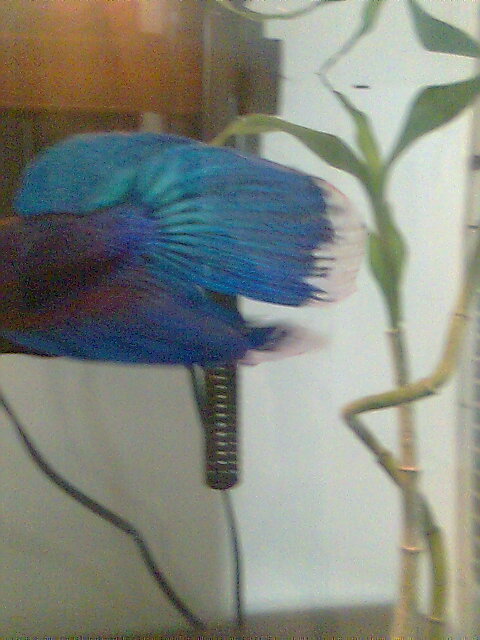 Finrot
QuestionQUESTION: Hi. I was wondering our Bettas fin is
Finrot
QuestionQUESTION: Hi. I was wondering our Bettas fin is
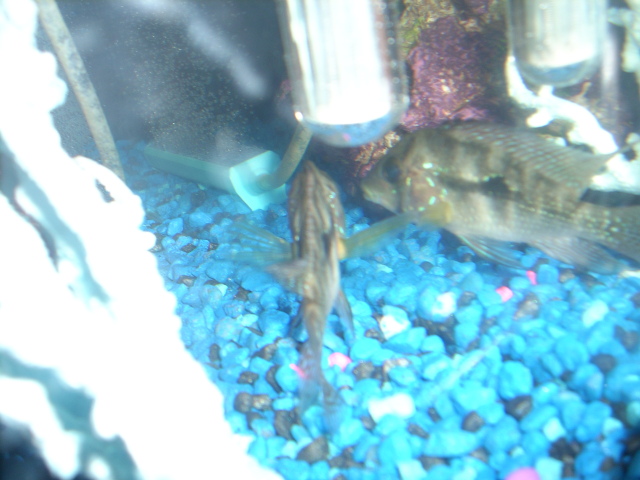 my south american cichlid
Questionmale Cichlid
QUESTION: Hi there I really
my south american cichlid
Questionmale Cichlid
QUESTION: Hi there I really
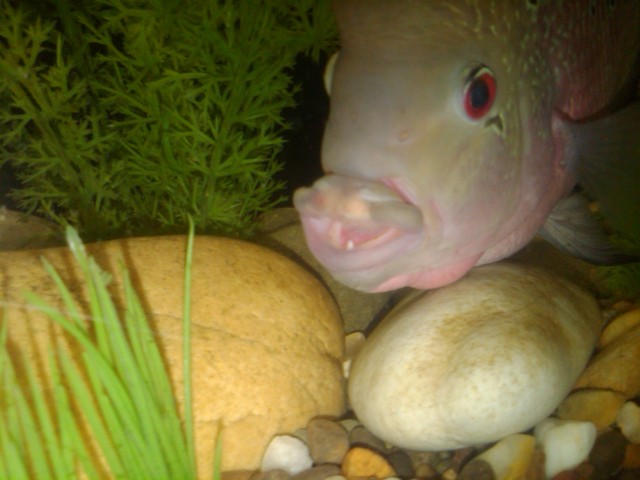 Sick Flowerhorn
Question
Swollen Lips
I have a beautiful Flowerhorn whi
Sick Flowerhorn
Question
Swollen Lips
I have a beautiful Flowerhorn whi
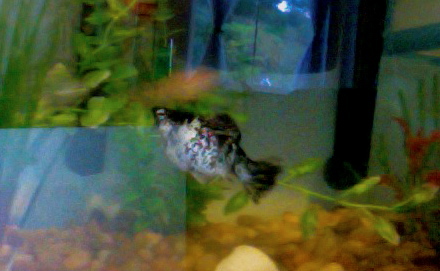 My Aquarium
Question
Dalmatian Molly
Alright wel
My Aquarium
Question
Dalmatian Molly
Alright wel
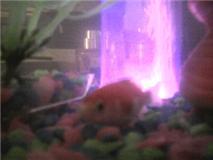 my fish is sinking to the bottom
QuestionQUESTION: Hello, my fish is sinking to the bott
my fish is sinking to the bottom
QuestionQUESTION: Hello, my fish is sinking to the bott